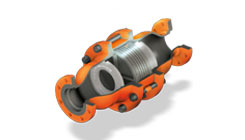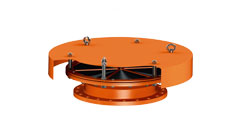A Flame Arrester is a device which allows gas to pass through it but stops flame in order to prevent a larger fire or explosion. There is an enormous variety of situations in which flame arresters are applied. Anyone involved in selecting flame arresters needs to understand how these products work and their performance limitations.
Modern Flame Arrester works on the principle: removing heat from the flame as it attempts to travel through narrow passages with walls of metal or other heat-conductive material. For instance, flame arresters made by most manufacturers employ layers of metal ribbons with crimped corrugations. Flame arresters are used in many industries, including refining, pharmaceutical, chemical, pulp and paper, oil exploration and production, sewage treatment, landfills, mining, power generation, and bulk liquids transportation. In many cases, the flames involve exothermic reactions other than oxidation. Processes which generate the combustible or reactive gases include blending, reacting, separation, mixing, drilling, and digesting. These processes involve numerous equipment configurations and gas mixtures.
Flame arresters are passive devices with no moving parts. They prevent the propagation of flame from the exposed side of the unit to the protected side by the use of wound crimped metal ribbon type flame cell element. This construction produces a matrix of uniform openings that are carefully constructed to quench the flame by absorbing the heat of the flame. This provides an extinguishing barrier to the ignited vapor mixture. Under normal operating conditions the flame arrester permits a relatively free flow of gas or vapor through the piping system. If the mixture is ignited and the flame begins to travel back through the piping, the arrester will prohibit the flame from moving back to the gas source.
In-line deflagration flame arresters are installed in pipes to prevent flames from passing. Most in-line flame arrester applications are in systems which collect gases emitted by liquids and solids. These systems, commonly used in many industries, maybe called vapor control systems. The gases which are vented to atmosphere or controlled via vapor control systems are typically flammable. If the conditions are such that ignition occurs, a flame inside or outside of the system could result, with the potential to do catastrophic damage.
End of line flame arresters allow free venting in combination with flame protection for vertical vent applications. They prevent flame propagation by absorbing and dissipating heat using spiral wound crimped ribbon stainless steel flame cells. End of line flame arresters are used in application such as petroleum storage tank vents.




